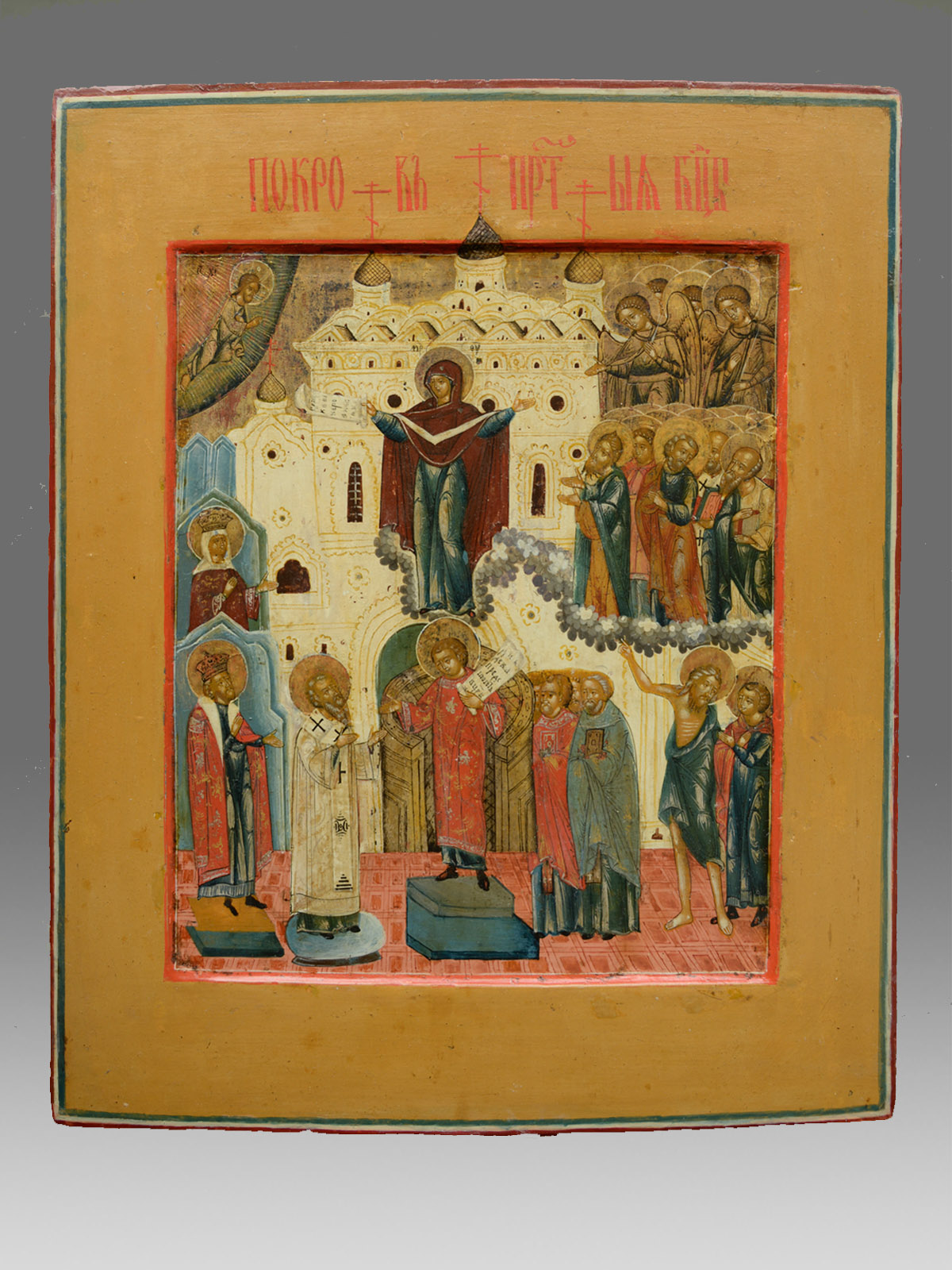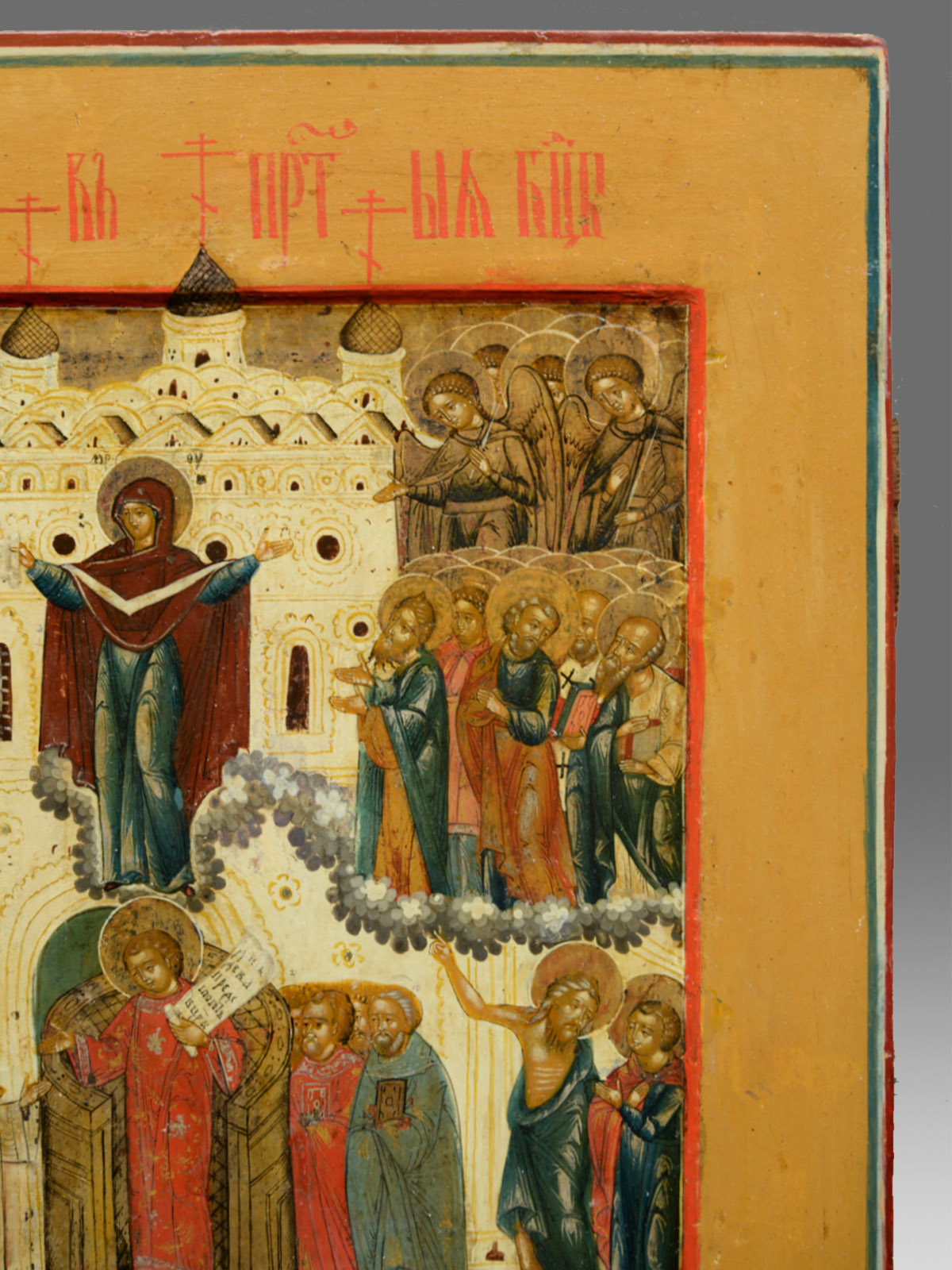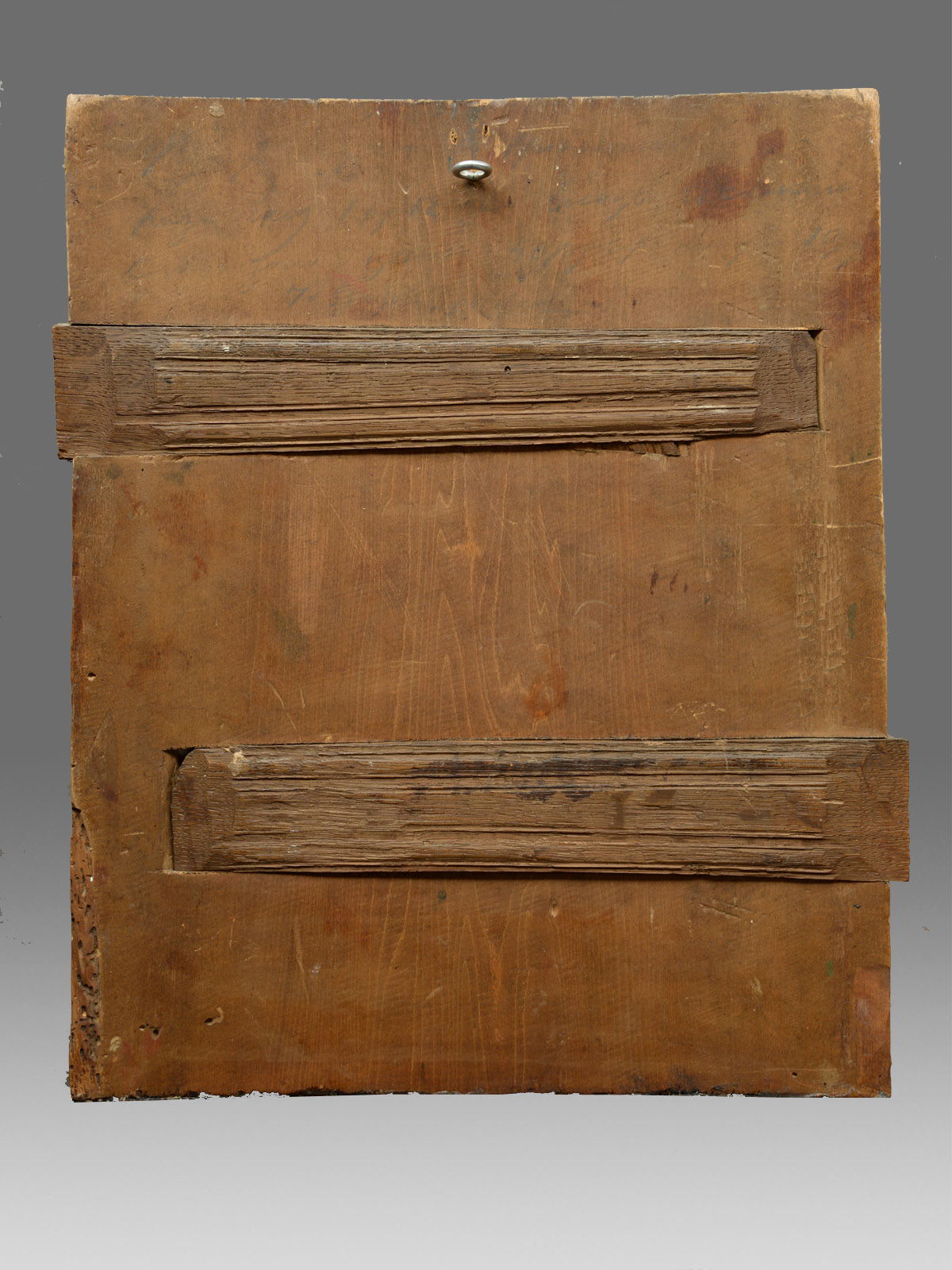Pokrow and Romanos legend
Origin
Russia/ Moscow
Age
around 1800 – 20
Size
34.0 cm x 28 cm
Previous owner
South German private collection
Description
On the subject:
Rare old icons Palech School buy in Munich
The Maphorion of the Mother of God was kept in the Blachernen Church in Constantinople.
The Maphorion of the Mother of God, which was venerated as a precious Marian relic in the Blachernen Church in Constantinople, is said to have saved the city from Slavic invaders in the year 86O.
This miracle is linked to a number of other legends surrounding the shroud of Mary.
One of these tales, which originated in the 10th century, tells of an apparition that is said to have occurred to St. Andrew (d. 936).
St. Andrew, accompanied by his disciple Epiphanias, attended the night service in the Blachernen Church.
Old Russian icons fine paintings for sale and to buy in Munich
Pokrow and Romanos legend:
Buy and sell old Russian icons in Munich
The vision of St. Andrew is depicted in the upper part of the icon as follows: He saw the Mother of God emerging from the Holy Door of the iconostasis with angels and saints.
Mary takes her veil from her head, holds it and prays for the protection of the people.
In the upper left part of the picture, Jesus Christ is in an aureole with his hand raised in blessing; in the lower right part of the icon is the vision of St. Andrew, which forms the background to a feast that the Russian church included in its liturgical calendar in the 13th century.
It celebrates this feast on October 1 under the name “Pokrov”.
On the same day, the Orthodox Church also celebrates the feast of St. Romanos, a hymn writer from Constantinople who lived in the 6th century, and it therefore became customary to include the image of this saint in the Pokrov icons, resulting in this composition for a double feast.
In the center of the lower half of the picture we see Saint Romanos standing on a pedestal. On the right is the jester Andreas with his pupil. Romanos, who had no vocal talent, was given the voice in a vision, whereupon he became the court singer of Haga Sophia. The patriarch, the clergy of Hagia Sophia, the emperor and the empress are depicted in the lower left part of the picture.
Rare genuine old icons for sale and purchase in the Munich area
The titulus is written in Church Slavonic script in the upper edge of the icon.
The icon is in excellent original condition
A collector’s item!




